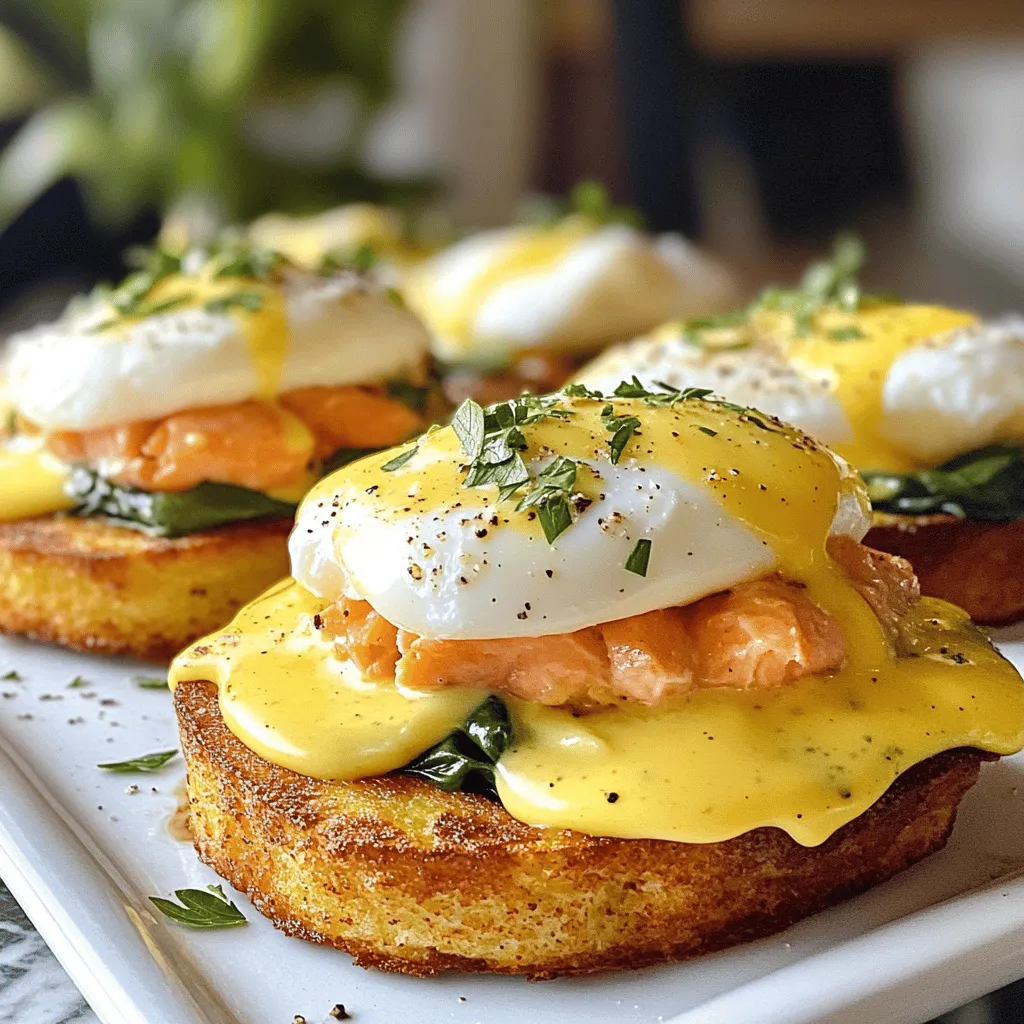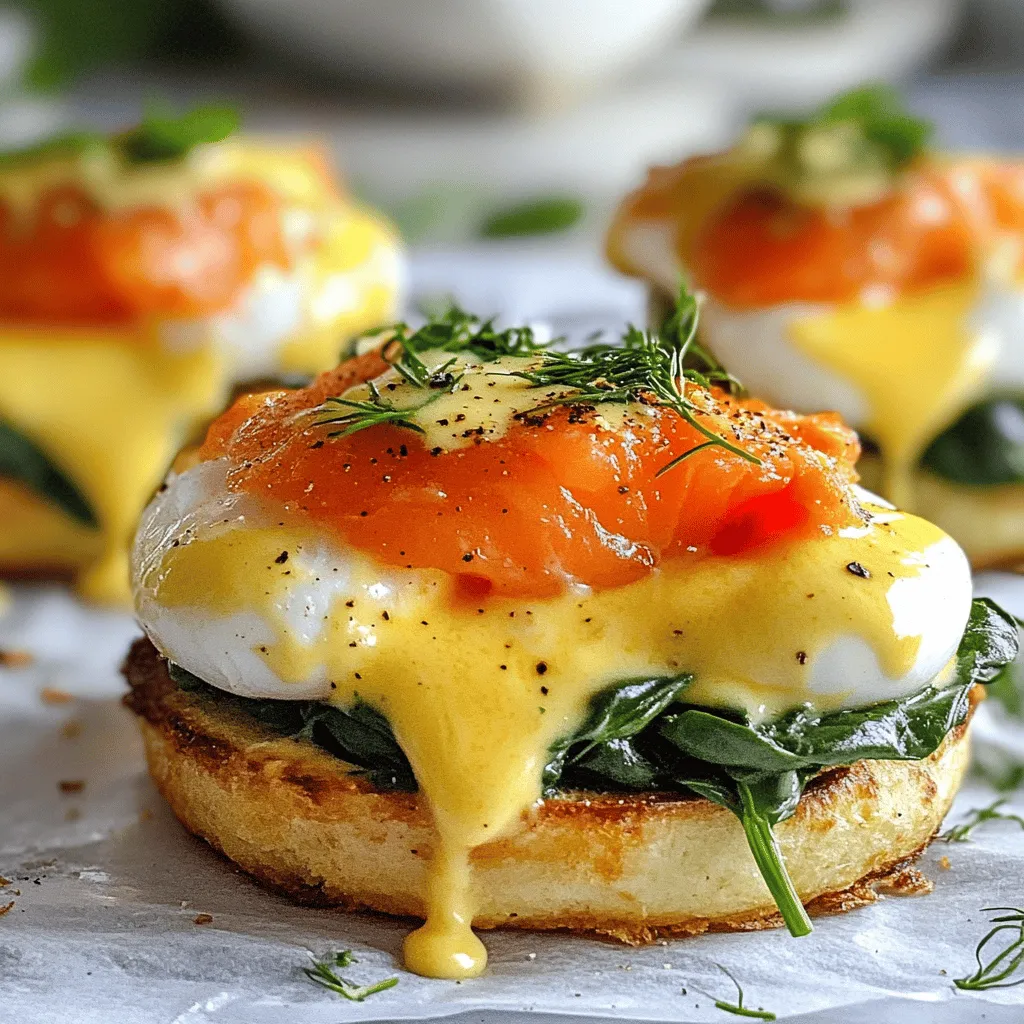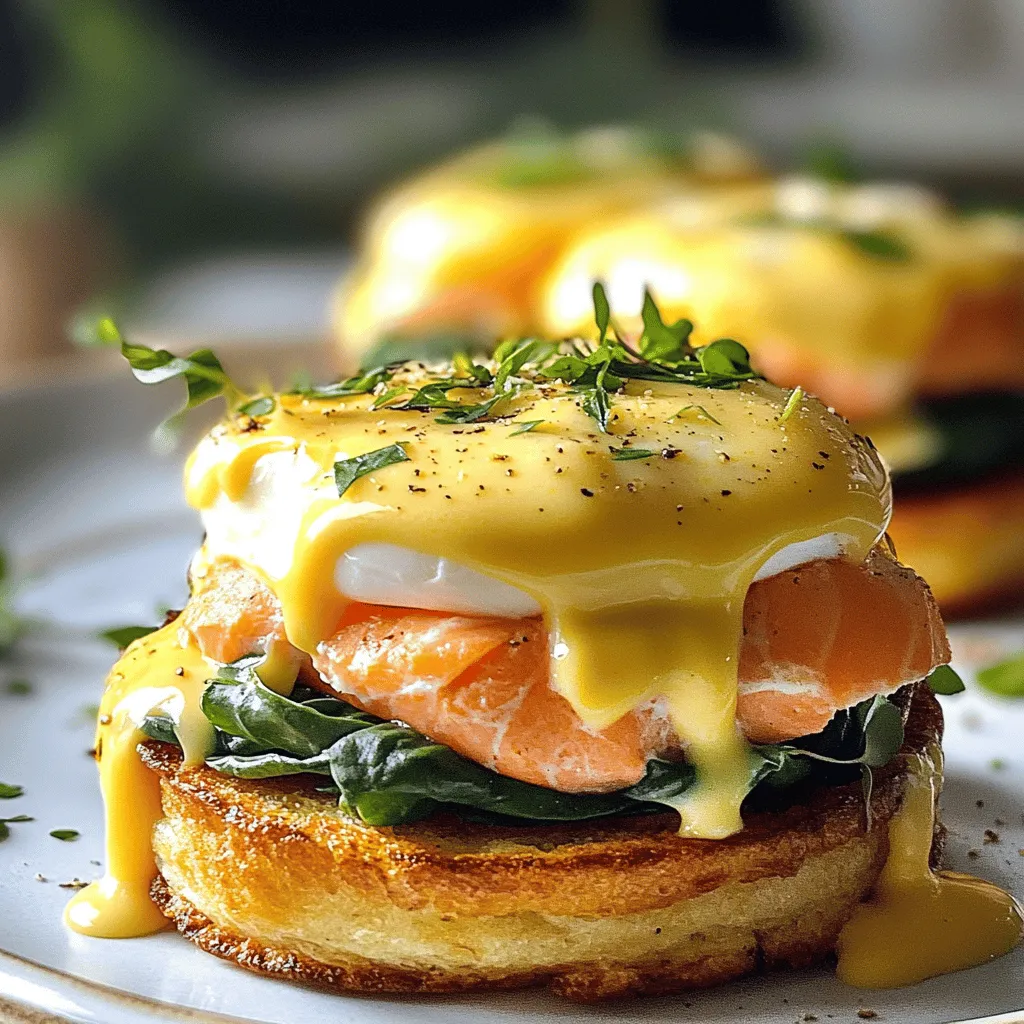Do you love brunch? Let’s dive into the tasty world of Eggs Benedict! This dish brings together rich flavors, history, and fun. From its secret origins to its rise in brunch culture, I’ll show you why Eggs Benedict is a must-try for any occasion. Ready to master this delightful dish? Join me as we explore classic ingredients, tasty variations, and tips to impress your guests.
What is the history and significance of Eggs Benedict?
Eggs Benedict has a fun and tasty past. Many believe it started in New York City. Some say a man named Lemuel Benedict created it in 1894. He asked for a late breakfast of poached eggs and hollandaise sauce on toast. His dish caught the eye of the chef at the Waldorf Hotel. The chef added ham and an English muffin. This dish became famous as Eggs Benedict.
Hollandaise sauce also has an interesting history. Many think it traces back to the French. They created a similar sauce called “sauce hollandaise.” This sauce is made with egg yolks, butter, and lemon juice. It is rich and creamy, making it the perfect match for the dish.
Eggs Benedict grew in popularity over the years. It became a brunch staple in many homes and restaurants. People love how it looks and tastes. The poached eggs create a beautiful yellow runny yolk. The hollandaise adds a rich flavor. Together, they make a perfect pair.
This dish also shaped brunch culture. Brunch is a meal that combines breakfast and lunch. Eggs Benedict is a classic choice for this meal. It feels fancy but is simple to make at home. This dish invites family and friends to gather and enjoy time together. The act of sharing a meal makes it special.
With its rich history and significance, Eggs Benedict remains a favorite. Enjoy making it with my Full Recipe for a delightful brunch experience.
What are the classic ingredients of Eggs Benedict?
Eggs Benedict is a classic brunch dish. It combines simple, fresh ingredients to create something special.
What ingredients are essential for traditional Eggs Benedict?
The main building blocks include English muffins, eggs, and Hollandaise sauce. You toast the muffins to give them a warm crunch. The eggs are poached to keep them soft and runny. For the sauce, you need egg yolks, butter, and lemon juice. Some people like to add a bit of Dijon mustard for extra flavor. If you want a twist, you can use smoked salmon or ham instead of the usual Canadian bacon.
How do you make hollandaise sauce for Eggs Benedict?
To make Hollandaise sauce, start with three egg yolks. Whisk them in a bowl with lemon juice and mustard. Place this bowl over a pot of simmering water. Keep whisking until the mix thickens. Then, slowly add melted butter while whisking. This helps create a smooth sauce. If you like, add a pinch of cayenne pepper for a touch of heat.
What are the best techniques for poaching eggs?
Poaching eggs can be tricky, but it’s easy once you know how. First, fill a pot with water and bring it to a gentle simmer. Add a tablespoon of white vinegar. This keeps the egg whites from spreading. Crack each egg into a small bowl first. Gently slide the eggs into the simmering water. Cook them for about three to four minutes. The whites should be set, but the yolks should still be runny. Use a slotted spoon to lift them out. Drain the eggs on paper towels before serving.
For a complete guide, check the Full Recipe.

What are some delicious variations of Eggs Benedict?
You can find many tasty twists on the classic Eggs Benedict. One popular option is Eggs Benedict with smoked salmon. This version adds a rich, smoky flavor. The salmon pairs well with the creamy hollandaise sauce. This dish feels fancy but is easy to make at home.
For a heartier meal, try using crispy bacon or ham. These meats add saltiness and crunch. You can also use Canadian bacon for a classic touch. Each meat option brings its own unique flavor, making the dish fun to try.
If you prefer something lighter, consider vegetarian Eggs Benedict options. Instead of meat, use sautéed mushrooms or roasted tomatoes. You can also top it with avocado for creaminess. Spinach adds a fresh taste. These variations are just as satisfying and are great for meatless meals.
Around the world, Eggs Benedict has unique twists. In some places, they use crab cakes instead of English muffins. Others might add unique spices or flavors from their local cuisine. Each twist gives you a new way to enjoy this beloved dish.
You can explore these variations and more in the Full Recipe for Eggs Benedict Royale. The recipe offers a delightful journey through flavors. Enjoying these options makes brunch special. Each bite brings a new taste you won’t forget.
How can I serve and present Eggs Benedict for special occasions?
When you serve eggs benedict for special occasions, presentation matters. A neat plate can impress your guests. Start with a warm platter. Place each eggs benedict on the plate with care. It shows you put thought into the meal.
What are some creative ways to plate Eggs Benedict?
You can use colorful plates or bowls to enhance the look. Try stacking the ingredients for height. Place the English muffin on the bottom, then add the spinach, smoked salmon, and egg. Drizzle the hollandaise sauce on top. Finish with a sprinkle of fresh herbs. This adds color and flavor.
How can I incorporate Eggs Benedict into a brunch menu?
Eggs benedict fits perfectly in a brunch menu. You can serve it alongside fresh fruit, a light salad, or crispy potatoes. Pair it with coffee, fresh juice, or even mimosas to elevate the meal. These drinks complement the rich flavors of the dish well.
What garnishes work best for Eggs Benedict?
Garnishes can brighten up your eggs benedict. I love using fresh dill or chives for a pop of green. You might also add a slice of lemon on the side. It gives your guests a choice to add a zesty touch. A few cherry tomatoes can add color and freshness too.
For a complete experience, follow the Full Recipe to create your delightful dish.

What are some tips for mastering the perfect Eggs Benedict?
To make Eggs Benedict shine, I have some key tips for you. First, let’s talk about hollandaise sauce. It can be tricky, but don’t worry!
What common mistakes should I avoid when making Eggs Benedict?
Many cooks rush the sauce. Whisk it gently and keep the heat low. If it gets too hot, it may curdle. Another mistake is not using fresh eggs. Fresh eggs hold their shape better when poached.
How can I make hollandaise sauce in advance?
You can make hollandaise sauce ahead of time. Just store it in the fridge. When you’re ready, gently reheat it in a bowl over warm water. Stir it often to keep it silky smooth.
What are the best practices for achieving perfect poached eggs?
To poach eggs well, use fresh eggs and add vinegar to the water. This helps the whites stay together. Crack an egg into a small bowl first. Then, slide it gently into the simmering water. Cook for about 3-4 minutes for a runny yolk.
With these tips, you’ll master the art of Eggs Benedict. You can impress friends and family at any brunch. Follow the Full Recipe, and enjoy every bite!
What is the nutritional value of Eggs Benedict and its health benefits?
Eggs Benedict is a tasty dish with good nutrition. A typical serving includes eggs, English muffins, and Hollandaise sauce. The main components provide protein, healthy fats, and carbohydrates.
What are the nutritional components of a typical serving?
In one serving, you get about 300-400 calories. This includes around 20 grams of protein from eggs and salmon. The English muffin adds fiber and energy. The Hollandaise sauce has fat from butter, which gives flavor and richness.
How can I accommodate dietary restrictions with Eggs Benedict?
You can make Eggs Benedict for many diets. For a gluten-free option, use gluten-free bread. If you want a lighter dish, skip the Hollandaise or use Greek yogurt instead. Vegans can replace eggs with avocado and use a plant-based sauce.
What are the health benefits of the ingredients used in Eggs Benedict?
Eggs are full of vitamins and minerals. They help with muscle growth and brain health. Smoked salmon offers omega-3 fatty acids, which are good for your heart. Spinach adds iron and vitamins, making this dish both tasty and nutritious.
Enjoy your Eggs Benedict while knowing it can fit many diets and offers great health benefits! If you want to try making it, check out the Full Recipe.
Eggs Benedict has a rich history and remains a brunch favorite. We explored its origins, variations, and classic ingredients like poached eggs and hollandaise sauce. I shared tips on serving and mastering this dish, ensuring you can impress guests. Remember, Eggs Benedict can fit many tastes, from meat options to vegan versions. Its nutritional value also offers health benefits. Embrace the creativity this dish offers, and elevate your brunch game with these insights. Enjoy your journey to perfecting Eggs Benedict!








